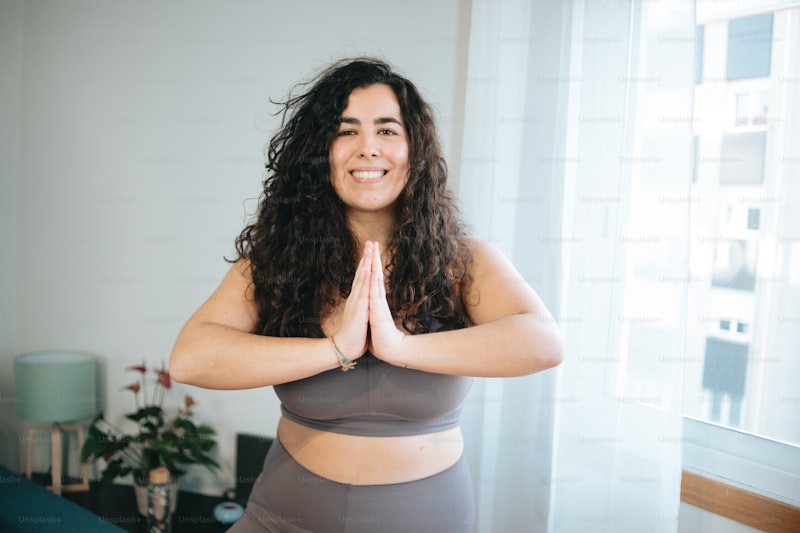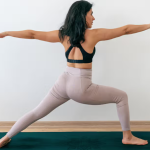Are we still in lockdown? Aren’t we? Most of us are still none the wiser after Sunday’s latest announcement from the government. The fact of the matter is that the Coronavirus is still a threat, and as such, life won’t be going back to BC-normal for a while yet.
For those of us that are lucky enough to be able to work from home, this means more days that blur into each other, as we sit hunched at the kitchen table trying to get our work done, as well as put a wash on, and keep the house looking less like a bombsite.
But staring at a screen can bring all sorts of problems.
What does looking at a screen all day do to our bodies?
Lolly Stirk, the pregnancy yoga guru said that she noticed that women coming to her classes these days often look green and dull from staring at screens all day. Her explanation for this is that when we’re focused on a screen our posture is such that we don’t breathe properly. After her classes, she said the women changed colour and were pink and glowing after actually taking some proper breaths!
As well as barely breathing, our posture is usually pretty terrible:
- We sit cross-legged, reducing venal flow and cutting off the circulation to the legs.
- Our lower back is often dropped, pulling on the muscles of the spine and causing compression of the nerves in the lower back.
- The weight of the head and arms dropping forwards causes the upper back to bulge outwards, creating a ‘hump’ effect.
- The shoulders are also pulled forwards, causing the chest to become convex and drop.
- The head is pulled forwards, again pulling on the upper spine, and pulling the cervical spine out of alignment, which can cause neck problems.
So what can we do about it?
As with most things, the first step is awareness. Once we become aware of how we’re sitting, it’s easier to do something about it. Sit at your computer and scan through your body – get someone to take a picture of you if you’re not sure! Once we see how we’re sitting we can use our common sense to do something about it.
But here are a few tips to start with:
- Uncross your legs, and sit on a chair that’s the right height so that your feet can be flat on the floor with your shins vertical.
- Lift your screen up on some big books (or you can buy a laptop stand) so that you can keep your head lifted while looking at the screen. Or just scroll up more often so that what you’re writing is closer to the top of the screen.
- Draw your shoulders back and down at regular intervals and try to keep them there while you work.
Do some chair yoga
If you haven’t got time to stop what you’re doing but are starting to feel a bit hunched over, then quickly do some chair yoga for your shoulders:
- Urdhva Hastasana/upward-facing arms – stretch your arms up to the ceiling, with palms facing each other. I love this simple pose because it does so much. It lifts the heart, lifts the spine, stretches the shoulders.
- Gomukhasana arms/cow face pose arms – stretch one arm up to the ceiling then fold it down behind your back so that the palm is against the centre of your shoulder blades. Stretch the other arm out and slight the back of the hand up the back – clasp the hands together if you can. If you can’t catch, then get hold of your clothes and pull the top elbow up and the bottom elbow down. Change arms.
- Garudasana arms/eagle arms – bring your arms in front of you with your arms at right angles and your elbows level with your shoulders. Cross one elbow over the other and bring the backs of the hands towards each other until you can catch the thumb of the hand on top with the little finger edge of the hand underneath. Breathe into the stretch across the shoulder-blades. Change the cross of the elbows.
- Paschima Baddha Hastasana/Bound arms behind your back – this is a simple pose that helps to draw the outer shoulders back and down. Hold one elbow behind your back and draw the arm down, then reach across and hold the other elbow. Change sides.
Get up and stretch!
We all take tea breaks and loo breaks don’t we? So what about 5-minute yoga breaks? This should be mandatory in my mind.
When we sit for long periods our legs and back seize up. So try these yoga poses which help to stretch and tone the legs:
- Ardha Uttanasana/Half Forward Fold Pose – with your hands at the wall or on a surface at hip height step back till your trunk and arms are level with your hips, and your legs are vertical. Take the feet hip-width apart and stretch back from the hands to the outer hips, and lift the legs. This stretches out the back and the hamstrings.
- Vrksasana/Tree pose – As well as strengthening the ankles, this pose works on hip and groin flexibility and balance, which is great to focus the mind too.
- Vajrasana/Kneeling pose – while it might feel counterintuitive to sit on your heels after lots of sitting, kneeling is actually a great way to restore energy to the legs, as it compresses the legs for the blood to then efficiently return.
- Sankatasana/Difficult pose (!) – To stretch out the back of the calves and Achilles kneel up on the balls of your feet. Hold onto a chair and then roll backwards and forwards from the back of the ball of the foot to the toes.
- Adho Mukha Svanasana/Downward Dog – Downward dog is a stretch of the whole back of the body, including the shoulders, as well as an inversion.
Happy body, happy mind
Remember that our bodies and minds are intrinsically linked. If we don’t look after our bodies and let them tense up into one big knot, our brains will also be fogged and tense. Getting up from your place of work to do some yoga (even an online yoga class) isn’t skiving off work, but making sure that you’re working to your optimum level.













